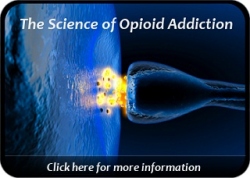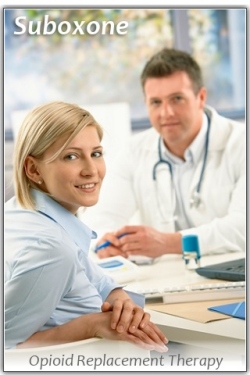
Clients across the country in methadone clinics and suboxone treatment programs are required to receive counseling while taking methadone or suboxone medication. Opioid replacement therapy specifically treats the painful opiate withdrawal, but counseling addresses the thinking, behaviors, and lifestyle that fed the addiction or that made individuals more vulnerable to developing addiction-related problems.
While in early recovery from opioid addiction, individuals begin to look at themselves and their lives through the process of counseling. It is during this time that clients face the truth about themselves and the effects that their addiction may have had on family and friends, finances, personal reputation, employment, and a host of other real world considerations.
It is easy to understand how some people can feel overwhelmed as they take their first sober look at the consequences of their recent addiction-based lives. However, change does occur … and change is a choice. A very personal and deliberate choice.
Many addicted individuals come to understand that one must face recovery one step at a time. No matter how much one wants to erase or repair past damage, there is only so much that he or she can do on any given day to start anew. What is required in this early phase of recovery is the simple desire to stay drug free and to try and make better decisions one-by-one with each new day. This sounds simplistic, but is a profound & powerful personal philosophy that leads the recovering person down a road to success. ACTION is a must. Action … is not optional.
Many suffering addicts are tired from fighting their addiction, but they also have an innate desire to move forward and to address their addiction problem. So many people become stuck in an active opioid addiction, spinning round and round, sometimes for years. They wonder if things will ever change. As the addiction becomes a familiar foe, addicts grow weary of the fight and settle for feeding the monster just to get through the day.
If you are opioid addicted, you do not have to be "stuck" in this addiction. You do not have to settle for a life of perpetual worry. It is important that you take action. You must take action. You must not wait for someone to come along and drop a miracle at your doorstep. Get into treatment immediately. Connect yourself with an addiction counseling center or detox or inpatient rehab. There is hope there. There are answers. There is support. There is real recovery going on everyday all over this country, and it is happening to people just like you. Believe that … because it is true! There are recovering people who have made the journey. There are treatment professionals with decades of experience. They have a clear road map and can offer you a new direction.
You can become unstuck! Methadone or suboxone treatment may be a part of the new solution for you. Or perhaps a medically supervised detox where they ease your withdrawal symptoms using safe medications. And you then follow that up with admission to an intensive outpatient counseling program (IOP) to learn the new coping tools you'll need in order to avoid relapse.
Maybe your first step is to go to a 12 Step meeting and ask for help, or a friend, or a pastor, or walk into the local mental health clinic and ask for a referral. Being "stuck" is a result of inaction, or taking the wrong action over and over. If you're serious about a new life and finally facing this opioid addiction, take the right action for yourself. So much is possible. You can do this. It can be done.

 Follow
Follow

 Methadone “take home” medication (also referred to as “take outs”) is a true convenience for those enrolled in a methadone clinic. Typically, clients who demonstrate that they are drug free and progressing in their substance abuse treatment can earn the privilege to receive take home medication.
Methadone “take home” medication (also referred to as “take outs”) is a true convenience for those enrolled in a methadone clinic. Typically, clients who demonstrate that they are drug free and progressing in their substance abuse treatment can earn the privilege to receive take home medication. In browsing articles on current methadone treatment, I came across a brief one in the United Kingdom’s
In browsing articles on current methadone treatment, I came across a brief one in the United Kingdom’s  There are many legitimate and appropriate uses for opioid medications. Opioids are excellent at managing acute or chronic pain for back injuries, post-surgical recovery, dental work, and other medical conditions that generate unbearable pain.
There are many legitimate and appropriate uses for opioid medications. Opioids are excellent at managing acute or chronic pain for back injuries, post-surgical recovery, dental work, and other medical conditions that generate unbearable pain. How doctors view methadone is becoming a hot topic. A friend recently informed me that the TV celebrity doctor, commonly known as Dr. Drew, was against methadone and had publicly made negative comments about the medication. I was disappointed to learn of this because Dr. Drew has a fairly large national audience who follow his opinion on medical matters. I then noticed that Dr. Jana Burson (a well-educated and experienced opioid addiction professional)
How doctors view methadone is becoming a hot topic. A friend recently informed me that the TV celebrity doctor, commonly known as Dr. Drew, was against methadone and had publicly made negative comments about the medication. I was disappointed to learn of this because Dr. Drew has a fairly large national audience who follow his opinion on medical matters. I then noticed that Dr. Jana Burson (a well-educated and experienced opioid addiction professional) 


